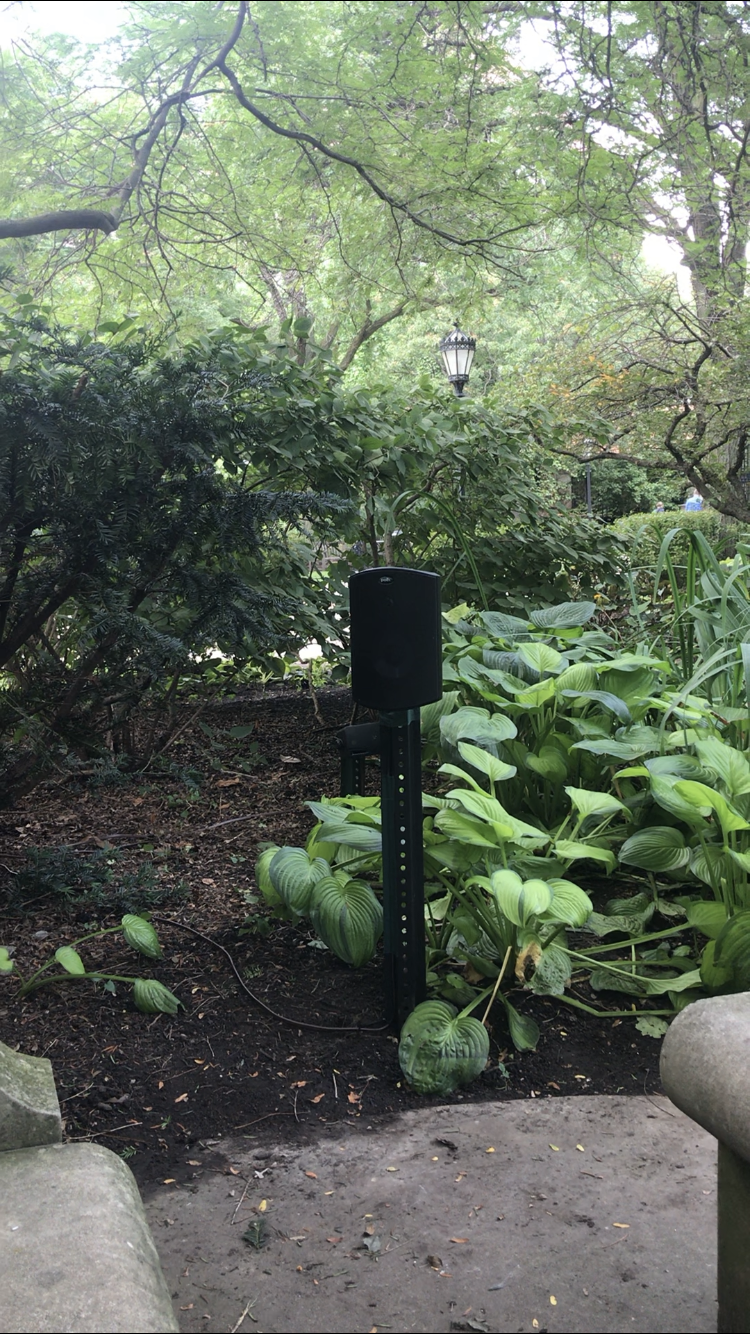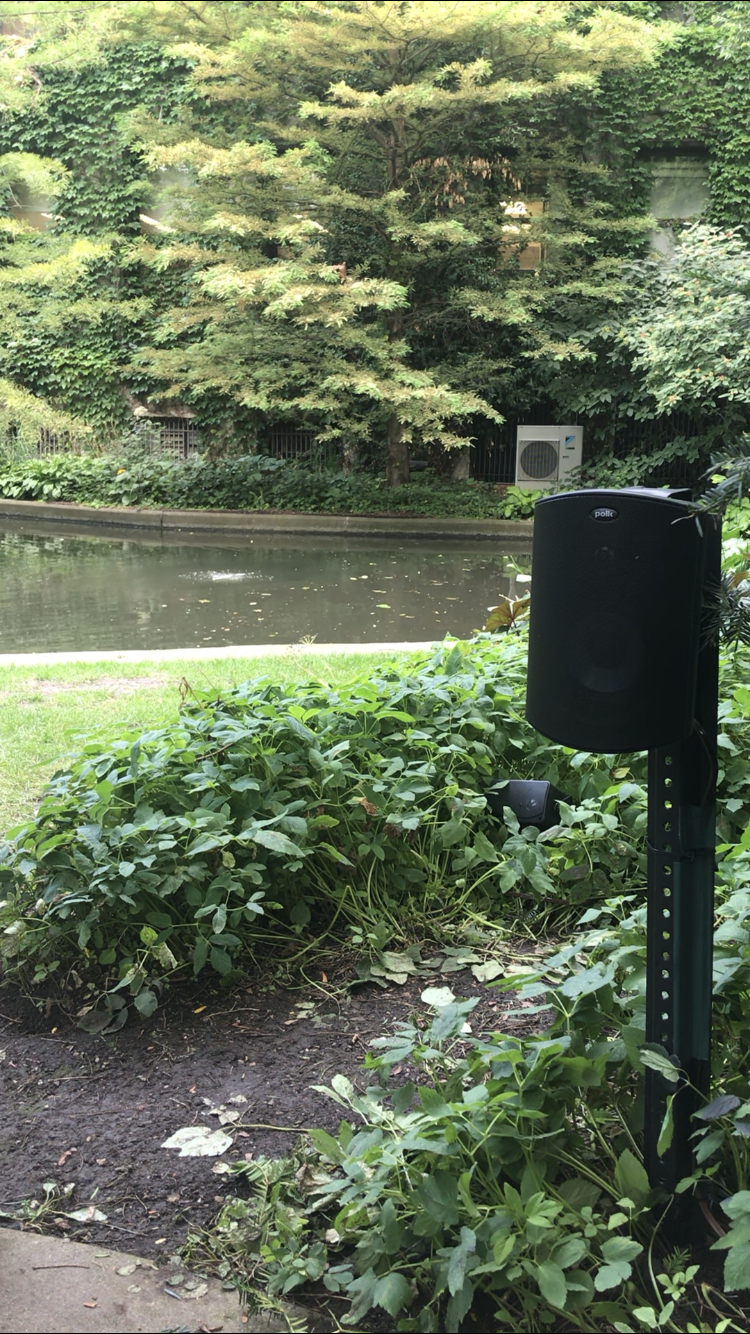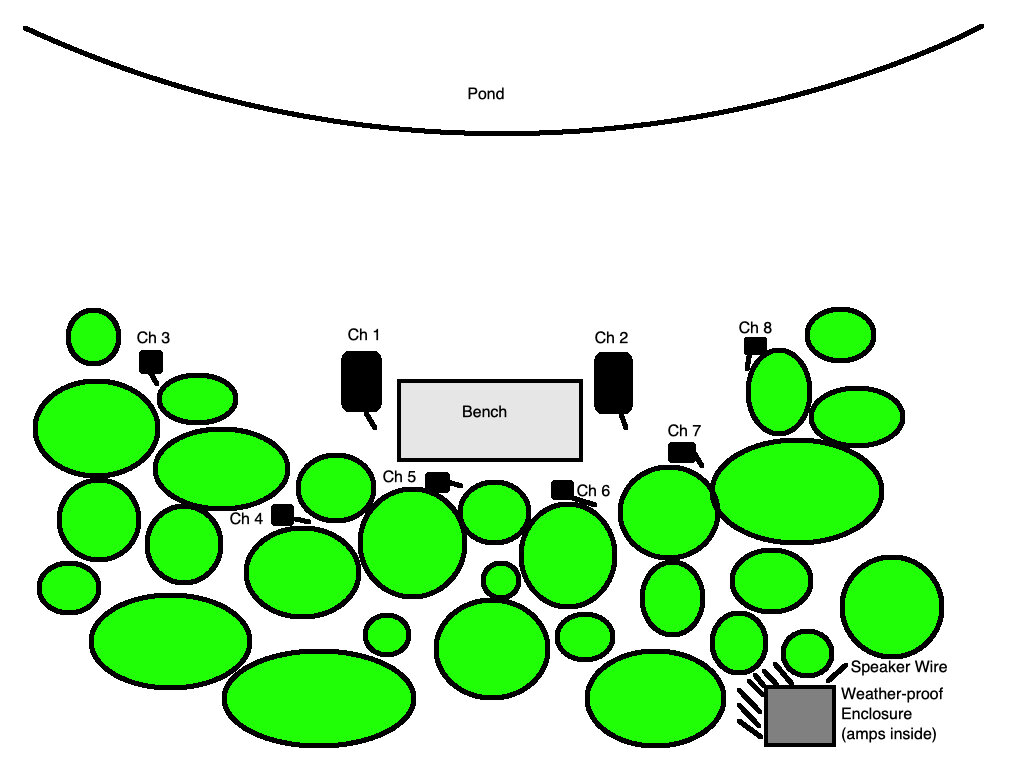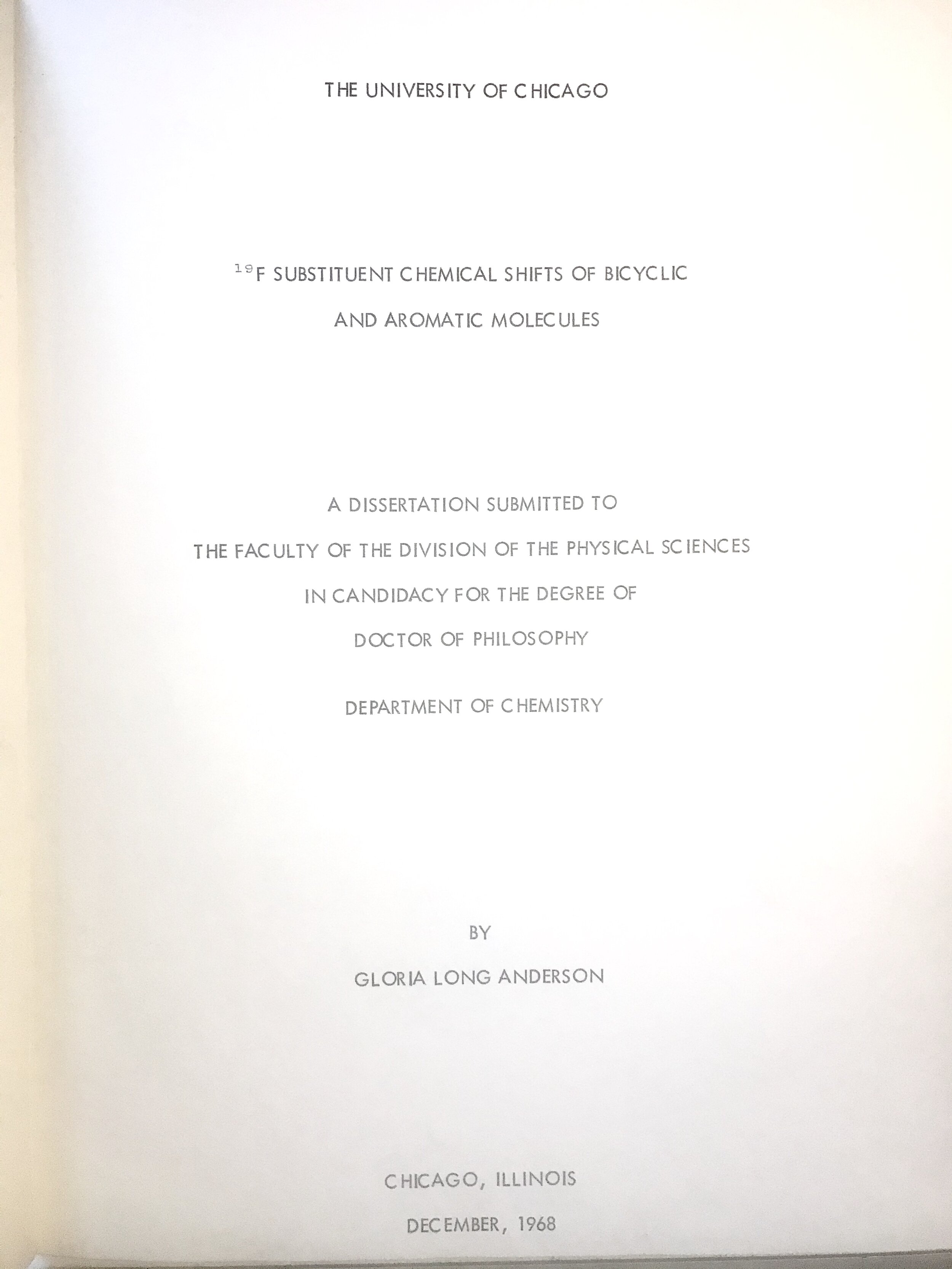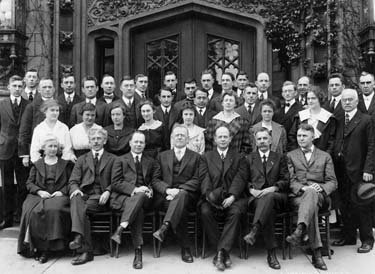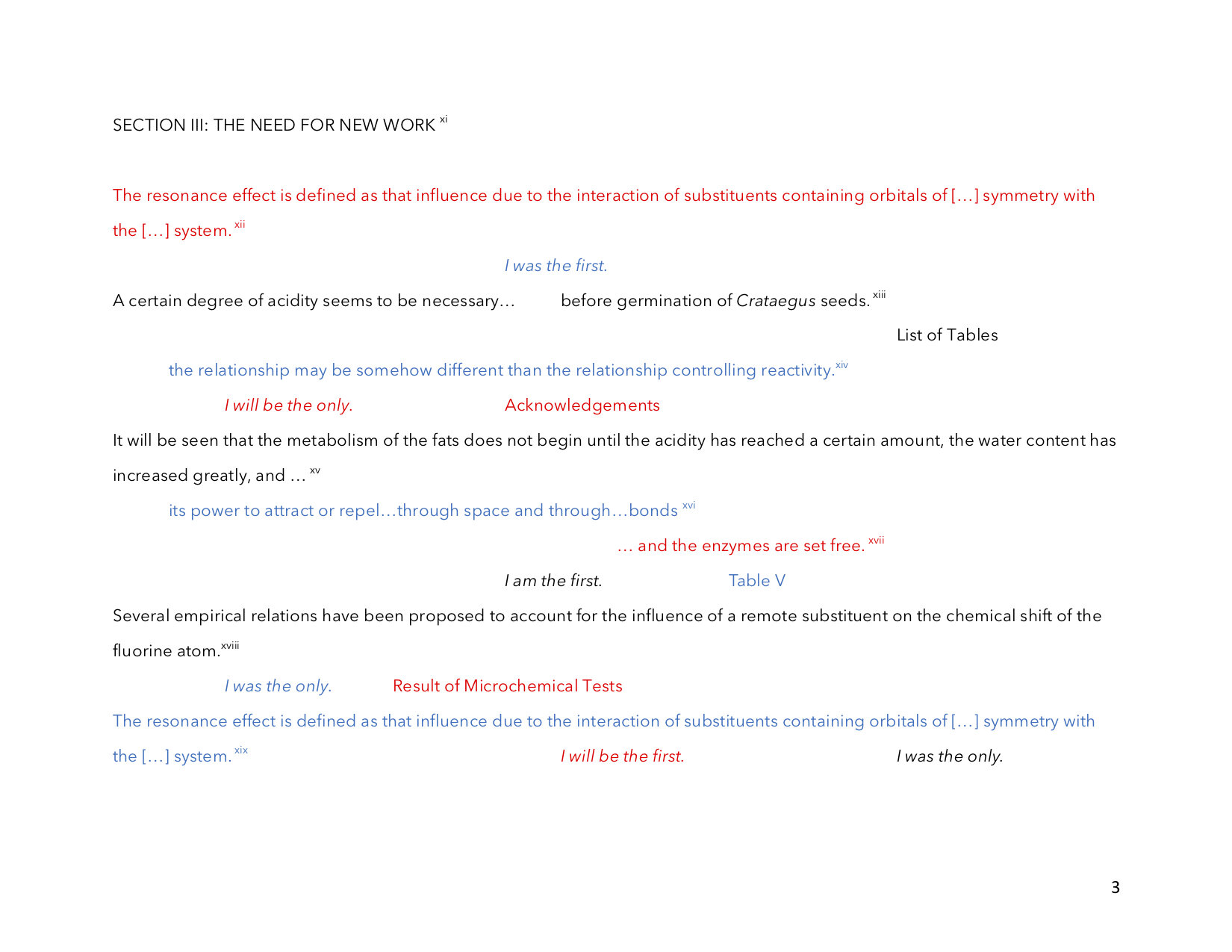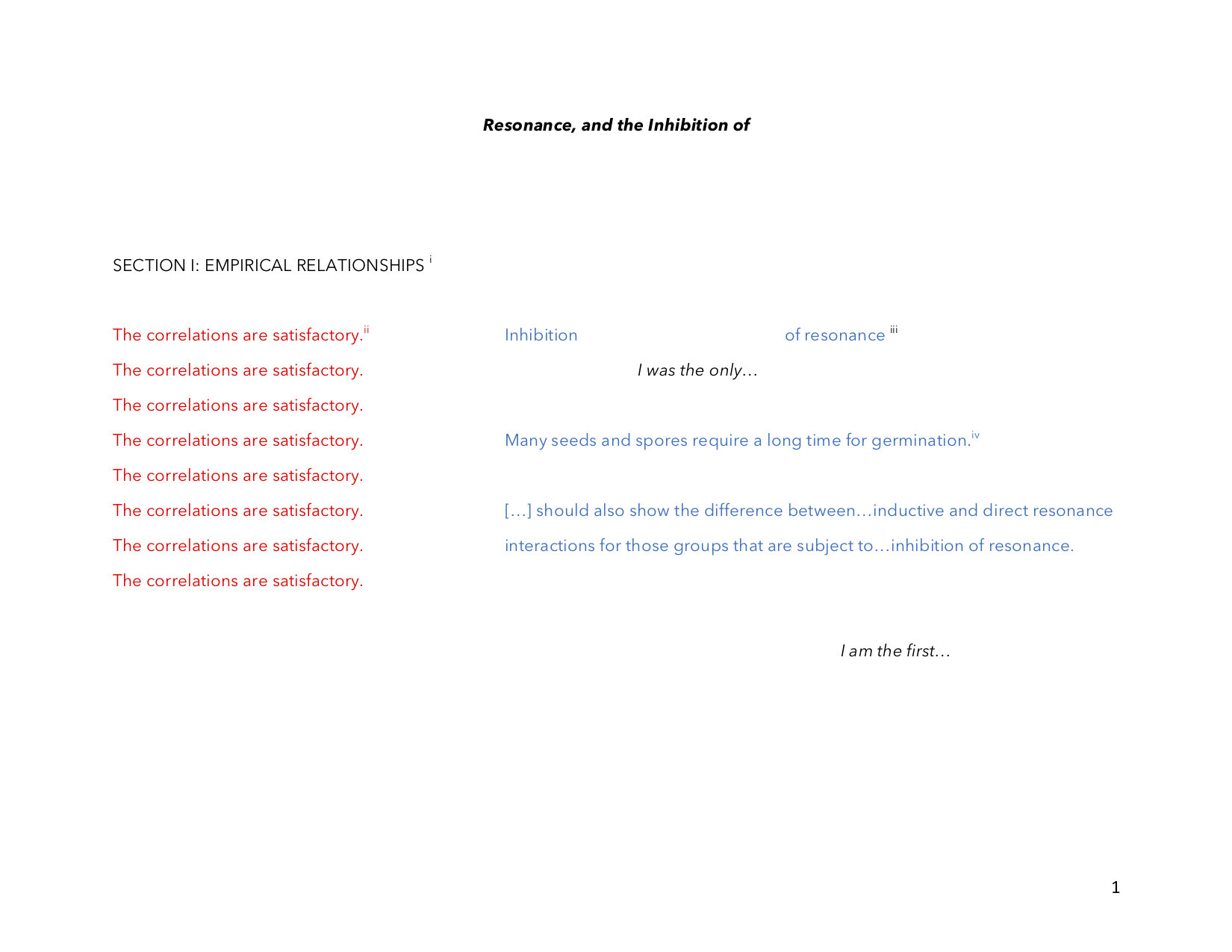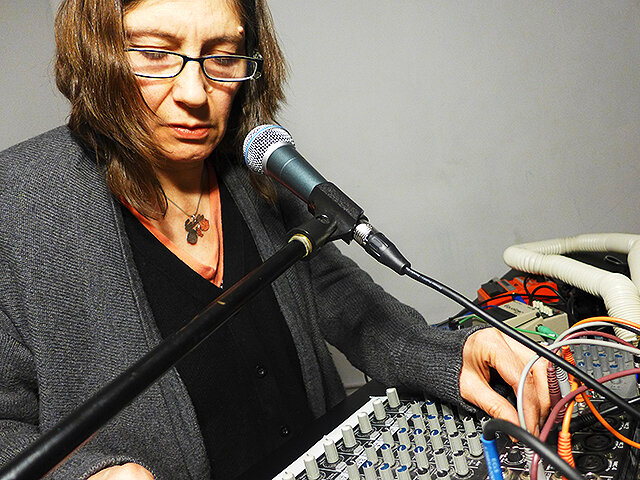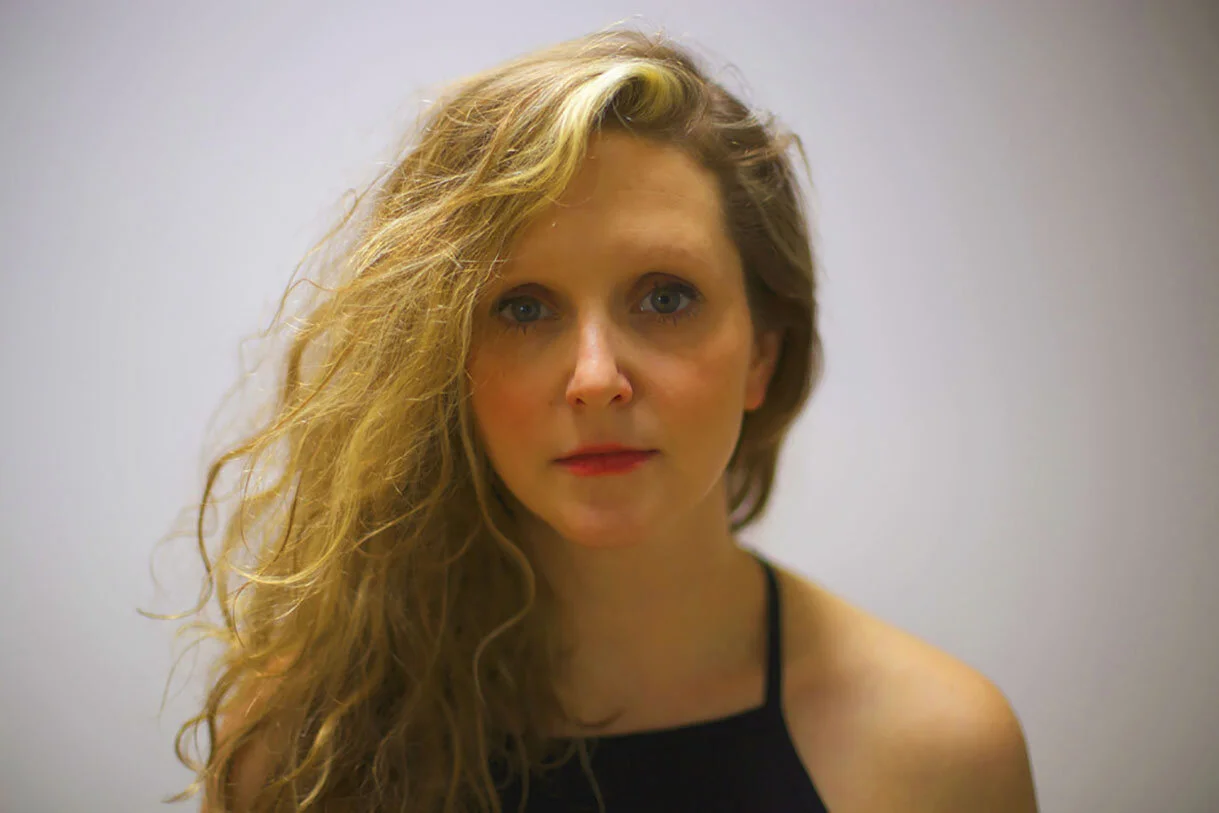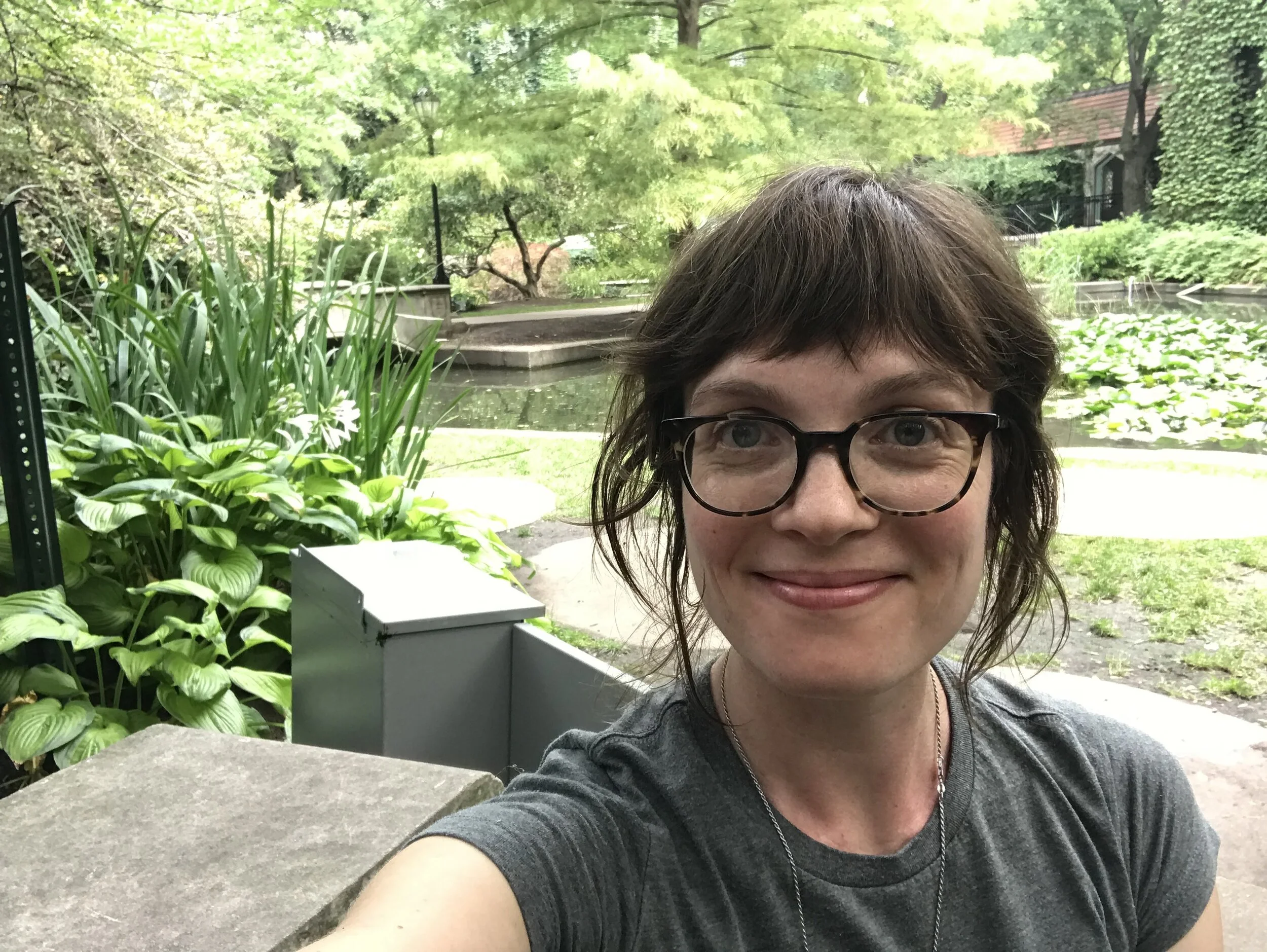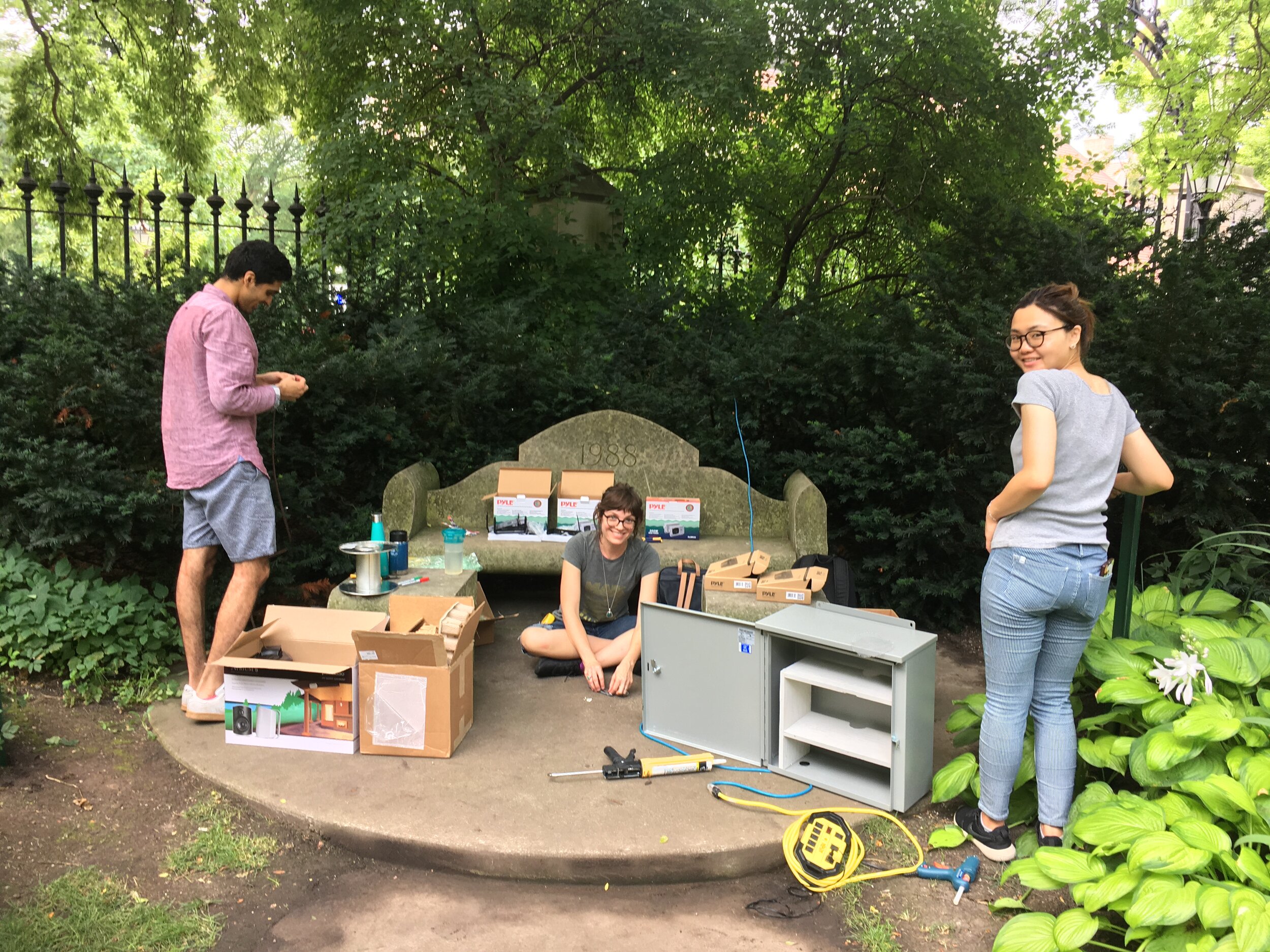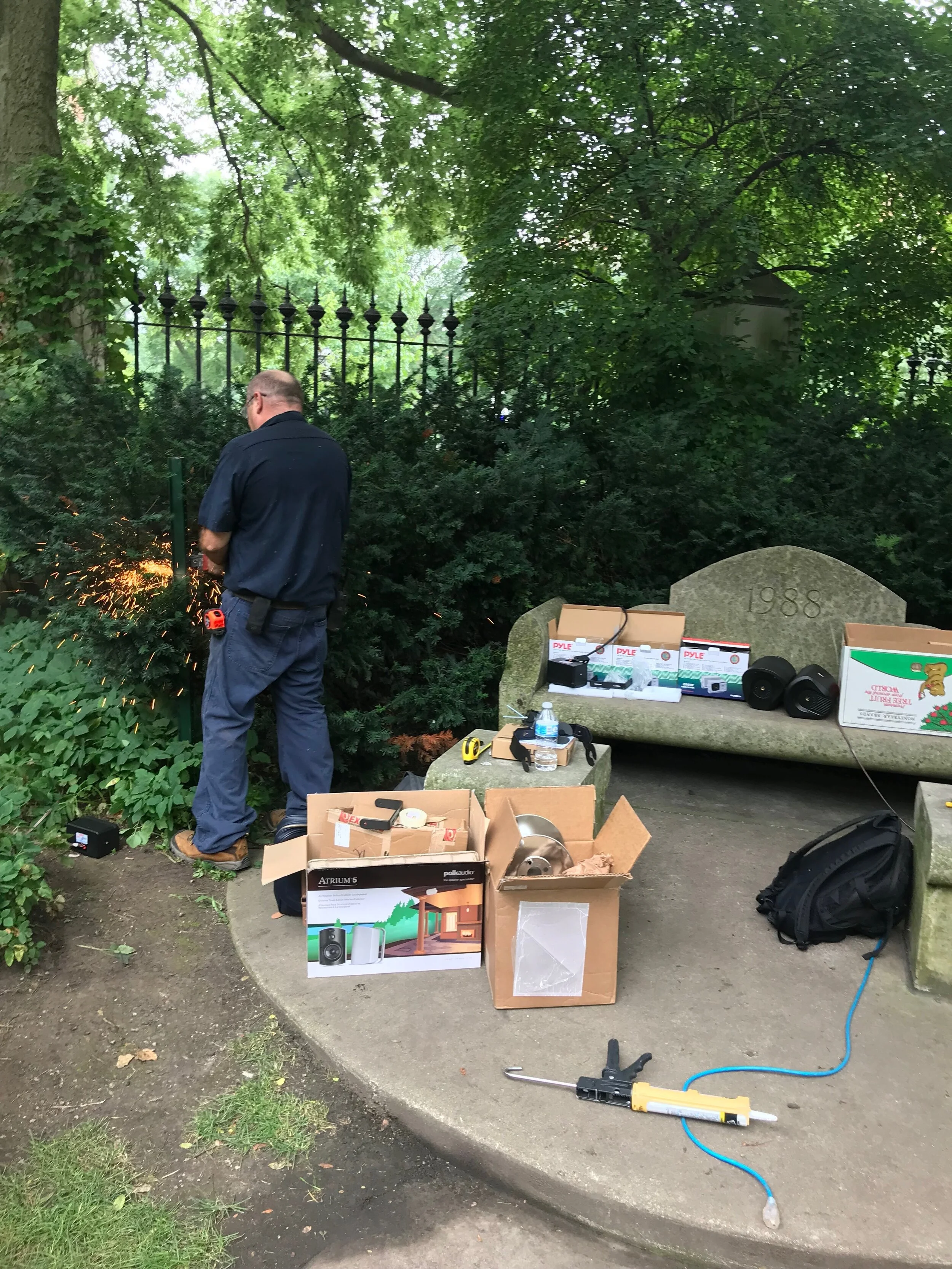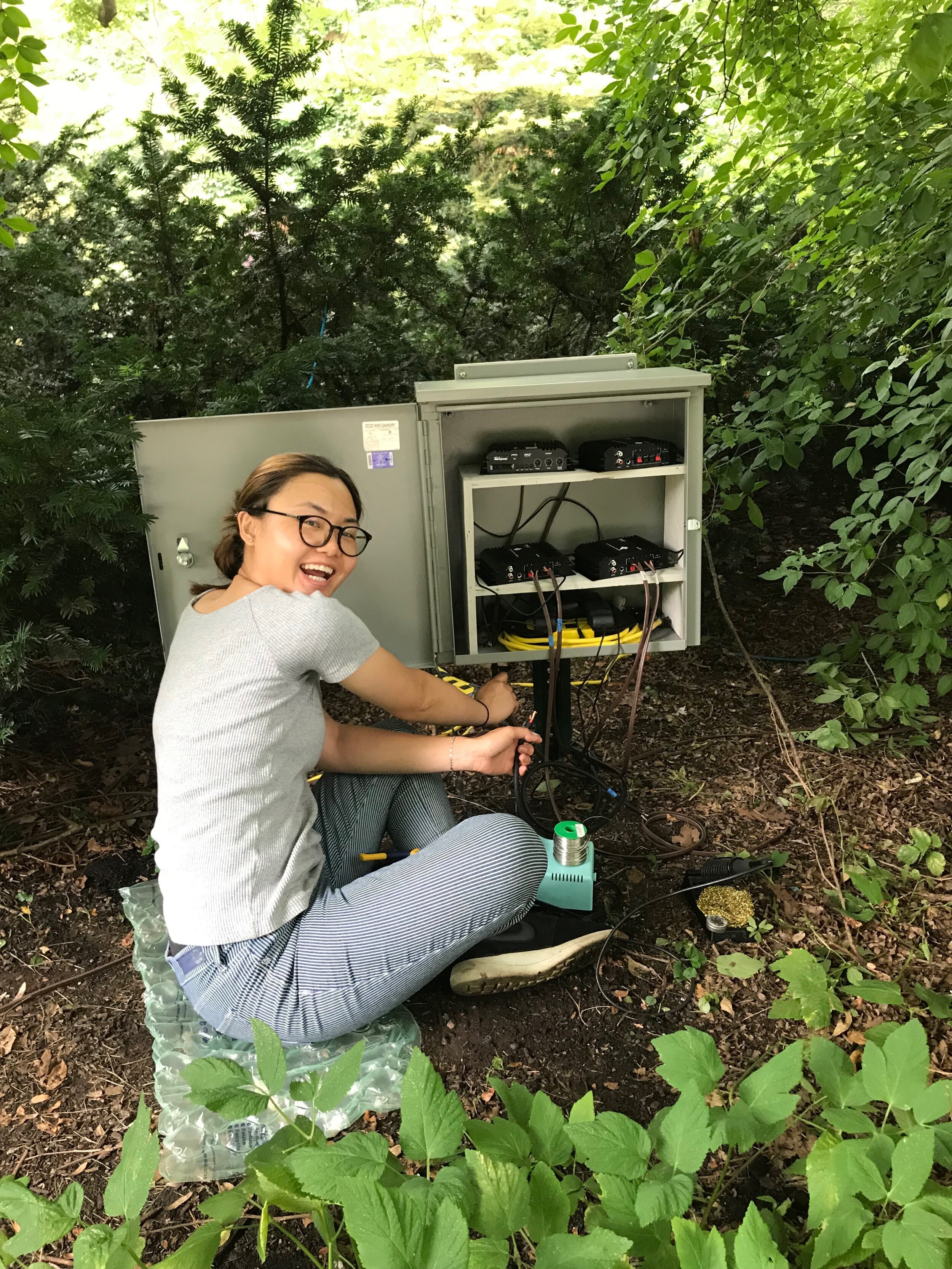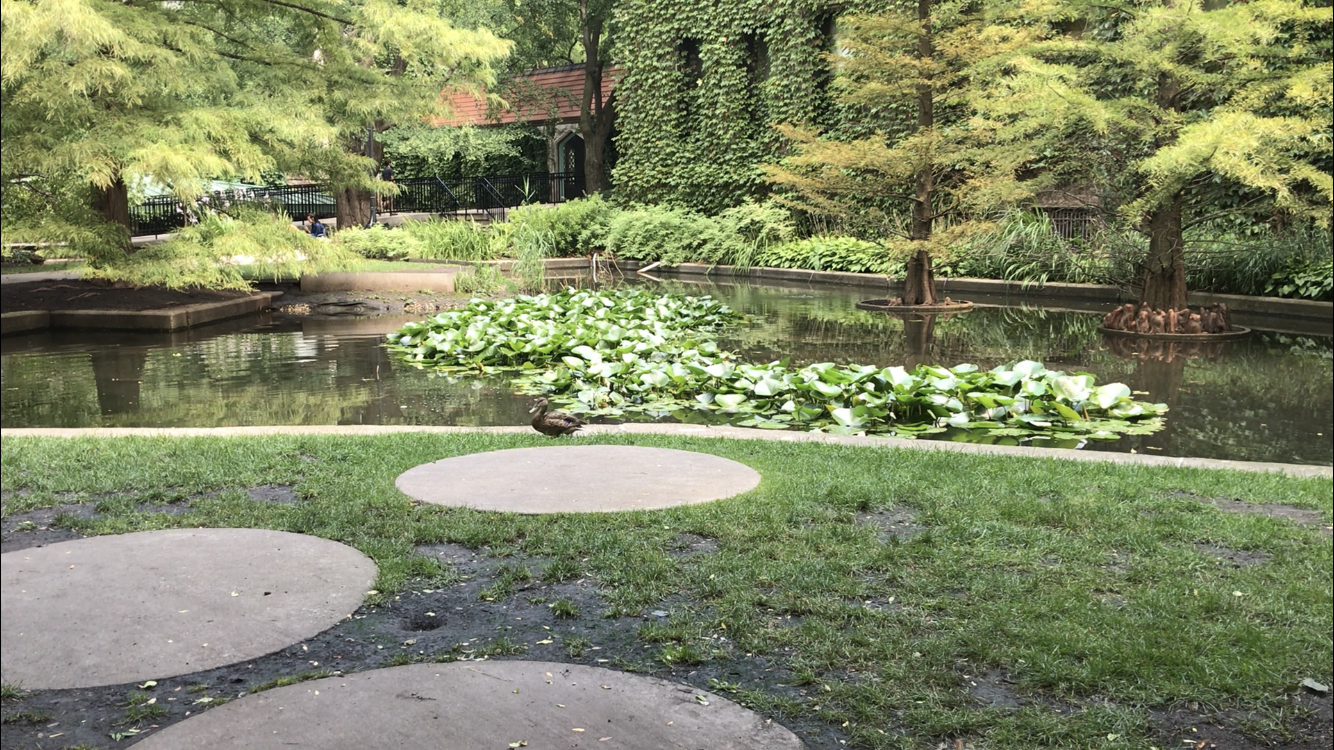Katherine Young
composer | improviser | sonic artist
Resonance, and the Inhibition of
Eight-channel sound installation using original text, fragments of PhD dissertations and an oral history interview, and sounds performed by vocalists Angel Bat Dawid, Carol Genetti, and Jenna Lyle
Commissioned by the Smart Museum of Art as part of the Chicago Sound Show. Read more about the show here!
In Resonance, and the Inhibition of, an eight-channel sound installation, hums, whirs, warbles, chirps, trills, and bits of text modulate and amplify the landscape of the University of Chicago’s Botany Pond. Apart from a few sine tones, the piece uses only vocal sounds and features performances by Angel Bat Dawid, Carol Genetti, and Jenna Lyle. The piece is inspired by the history of the pond, the campus soundscape, as well as the work and careers of two female-identifying scientists. .
Researching the history of the pond, I was struck by a 1917 photograph of the Botany Department, which featured a single female faculty member, botanist and microchemist Sophia Hennion Eckerson (1880-1954). Eckerson completed her doctorate in 1911 at the University of Chicago. She continued to work at U. of C. as an assistant plant physiologist and instructor, but she was never promoted to a full-time faculty position. Eventually, Eckerson left academia and pursued a fruitful career in the private and governmental sectors.
Having just finished my PhD in a historically male-dominated field, Eckerson’s story resonated with me. I tracked down her PhD dissertation on plant physiology and found her scientific prose to be rich with sonic poeticism. I wanted a second text to work in counterpoint with Eckerson’s, and I eventually learned about chemist Gloria L. Anderson. Anderson was born in 1938 in Arkansas, where, as an African-American, she attended segregated schools. At 30 she completed her PhD from the University of Chicago. In her own words, “I felt coming from where I came from that it was almost impossible for me to get the kind of training that I had gotten. …I used to tell them that I squeezed through the wire mesh fence.” Graduating in 1968, the year of Martin Luther King, Jrs.’s assassination, Anderson decided to contribute to the Civil Rights Movement by working to educate other black scientists, and she went on to be the Fuller E. Callaway Professor of Chemistry at Morris Brown College and Vice President for Academic Affairs.
In Resonance, and the Inhibition of, I weave and layer together fragments of Eckerson’s and Anderson’s dissertations, along with the above quote, from Anderson from an oral history interview collected by the Science History Institute. I also add some of my own prose. ( “I was the first.” “I am the only.”) With this composite text, I create an often-dense eight minutes of audio that repeats every twenty minutes. Before, during, and after these eight minutes, I use abstract vocal noises and phoneme fragments improvised by Dawid, Genetti, and Lyle, to create four different 20-minute sections. With each iteration, the text loop gets recontextualized—by these different artificial soundscapes, as well as by the sounds of the campus’s animals, plants, architecture, and people.
In its original installation, the piece repeated for 14 hours each day, allowing for silence overnight. The textual material emanates from two primary speakers, visibly positioned on either side of a bench, where visitors to the pond can sit and watch the water, ducks, turtles, and humans—and listen. The other vocal sounds, which range frog-like croaks to sung tones to phoneme stutters, migrate through the six other speakers. I placed these smaller speakers on the ground in the surrounding plants. During the text-driven eight-minute loop, electronic tones (harmonic with the hum of the neighboring Botany building’s air ventilation system) propel the piece to the sonic foreground. At its most sparse, the piece blends in with the sounds of the campus and pond to create a speculative soundscape. At these moments, I imagine the quiet sounds coming from the small speakers to be little secrets: whisperings from Eckerson, Anderson, and other women who sat on that bench before us, perhaps contemplating chemical compounds, plant physiology, or the way their voices resonate off the pond’s surface.
I would like to thank Angel Bat Dawid, Carol Genetti, and Jenna Lyle for their performances and improvisations; Alex Inglizian for recording and mastering work; Mahdav Ghei and Chloe Yunong Lin for installation assistance; Olivia Block and Stephan Moore for generous advise along the way; Barry O’Quinn, Michael Klemchuk, and others from Facilities and the Smart Museum for installation support; and Laura Steward and Sam Pluta for dreaming up the Chicago Sound Show and inviting me to be part of it.

